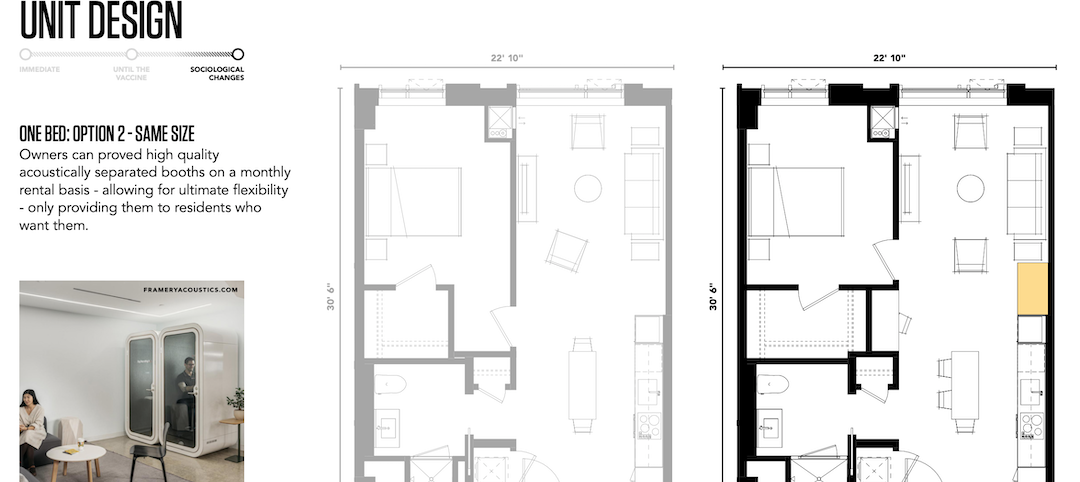McKinsey & Company, the international corporate consulting firm, has issued a new research study, “Modular construction: From projects to products.” Written by an international team, it discusses a wide range of building sectors, but its main focus is multifamily.
The authors claim that modular construction could claim $45 billion of the total $277 billion new-build multifamily market by 2030 in the U.S. and Europe at moderate penetration and save $6 billion a year in costs.
Assuming the U.S. represents at least half of the market (probably more like 60-70%), those would seem to be very attractive numbers for apartment, student housing, and senior living construction, where modular construction works best.
SEE ALSO: Almost everything you wanted to know about industrial construction
But I have some problems with the McKinsey findings. To start with, I wonder where they got the $277 billion figure for multifamily construction in the U.S. and Europe by 2030. That looks really high to me. It would be a godsend if the U.S. could be producing half of that, say, $130 billion or more of apartments and other forms of multifamily—we sure could use them. But with the U.S. producing at best $60-70 billion in multifamily construction, it’s hard to see a doubling of that rate of construction in the next decade.
The McKinsey numbers may also be weighted toward the rest of the world, less so toward the U.S. One of the charts I found most intriguing (page 22 of the report, if you’re keeping score) had to do with the current offsite share of housing by country, i.e., how much “factory-produced” housing construction is going on in various countries.
The global leader turns out to be the trifecta of Finland-Norway-Sweden, where 45% of housing construction is produced off site, followed by Japan (15%), Germany (10%), China (6%), and Australia and the U.K. (each 5%). The U.S.? Three percent.
It’s not all doom and gloom for the U.S. Modular, prefab, or “industrial construction” is starting to catch on, particularly in student housing and the low- to mid-rise apartment sector. One reason for this is the pervasive adoption of Revit and other 3D modeling tools, which make it relatively easy to transfer data from the designer’s desktop directly to the offsite factory.
Another reason why we’ll see more industrial construction in multifamily is the dire shortage of skilled labor. As the McKinsey experts note, shifting to offsite manufacture is cheaper—and “it may even attract new people into the workforce who do not wish to move from one construction site to another following projects.” Or who’d rather be in a nice cozy factory than freezing their butts on a job site in the middle of a Minnesota winter.
But don’t expect huge savings in initial costs. The most important benefit of offsite construction, when done right, is reliability—the assurance that a wall system or an entire room module can and will be delivered on time and to high level of specification.
Related Stories
Multifamily Housing | Apr 2, 2021
250-unit rental building opens in Brooklyn
CetraRuddy designed the project.
Multifamily Housing | Mar 30, 2021
Bipartisan ‘YIMBY’ bill would provide $1.5B in grants to spur new housing
Resources for local leaders to overcome obstacles such as density-unfriendly or discriminatory zoning.
Multifamily Housing | Mar 30, 2021
ProCONNECT Multifamily, ProCONNECT Single-Family open for Developers, Builders, Architects
Sponsors and Attendees can still sign up for ProCONNECT Multifamily April 21-22, ProCONNECT Single-Family for May 18-19
Multifamily Housing | Mar 28, 2021
Smart home technology 101 for multifamily housing communities
Bulk-services Wi-Fi leads to better connectivity, products, and services to help multifamily developers create greater value for residents–and their own bottom line.
Multifamily Housing | Mar 27, 2021
Designing multifamily housing today for the post-Covid world of tomorrow
The multifamily market has changed dramatically due to the Covid pandemic. Here's how one architecture firm has accommodate their designs to what tenants are now demanding.
Multifamily Housing | Mar 23, 2021
One Hundred Above the Park completes in St. Louis
Studio Gang designed the building.
Multifamily Housing | Mar 22, 2021
Waldorf Astoria Miami will become the tallest tower south of Manhattan
The supertall tower will include a hotel and residences.
Multifamily Housing | Mar 18, 2021
Mixed-use residence for UCLA medical students completes
Lorcan O’Herlihy Architects designed the project.
Multifamily Housing | Mar 15, 2021
First phase of Presidium Waterford breaks ground in Austin, Texas
O’Brien Architects and Dwell Design Studio are designing the project.
Luxury Residential | Mar 10, 2021
Luxury multifamily development opens at the front door of Charlotte’s South End neighborhood
Broadstone Queen City recently opened its doors to its first residents.
















